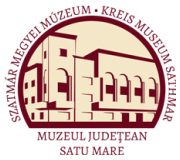Szőcs Péter Levente (szerk.): Călătorii istorice pe Valea Someşului. Ghid turistic (Satu Mare, 2014)
Medieşu Aurit
the Catholic Church would mostly serve the material support and the endowment of the parishes founded by Catherine herself, and not the ecclesiastic hierarchy, as it was usual. Also, the Pope allowed the Franciscans in the area to solve the problems of the believers, that usually were of the bishops or of the Pope’s jurisdiction (forgiveness for capital sins) in order to help to the spiritual integration of the inhabitants within the Catholic Church. The interest of the Pope for this peripherical region of the medieval Hungary is part of an ample action of turning people to Catholicism during the 14th century carried on by the king Louis of Anjou. It is sure, however, that Medieş was owned by the Móric family of the Pok kţtil the family disappeared, in 1490. Two years later, the nobles of the Báthori family inherited the domain of Medieş, as a consequence of matrimonial alliances with the previous landlords. Medieş becomes the centre of their domain in this period and obtains the rank of market town (oppidum). This domain used to comprise over one hundred localities, the entire Oaş region and the localities from both sides of the Someş river, starting from Seini and Roşiori until Odoreu and Culciu. The renaissance castle. The Báthori family of Şimleul Silvaniei disappeared at the beginning of the 17th century, at their domain the centre at Medieşu Aurit was inherited by the Lónyai family. Sigismund Lónyai, comes of Bereg and Crasna counties, and diplomat of the Prince of Transylvania, Gabriel Bethlen, started to build the Renaissance castle that still stands in ruins in the centre of the locality. The castle has a regular rectangular plan, according to the fashion of the time promoted by the Prince. The four wings of the building make an inside yard, and every corner is fit with a mW Castelul Lónyai - Faţada principală Lónyai-kastély - Főhomlokzat The Lónyai Castle - The main faţade 17
